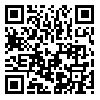Volume 33, Issue 2 (11-2009)
Research in Medicine 2009, 33(2): 70-76 |
Back to browse issues page
Download citation:
BibTeX | RIS | EndNote | Medlars | ProCite | Reference Manager | RefWorks
Send citation to:



BibTeX | RIS | EndNote | Medlars | ProCite | Reference Manager | RefWorks
Send citation to:
Ahmadi1 N, Aghili1 S A A, Azimzadeh1 E, Hedayati2* M. The effects of one session aerobic activity and sauna on serum and urinary sodium and potassium concentration in athletes. Research in Medicine 2009; 33 (2) :70-76
URL: http://pejouhesh.sbmu.ac.ir/article-1-623-en.html
URL: http://pejouhesh.sbmu.ac.ir/article-1-623-en.html
, Hedayati@erc.ac.ir
Abstract: (14107 Views)
Abstract
Background: Water and electrolyte balance are critical for the maintenance of general health. Exercise creates much variation in renal homodynamic and electrolytes excretion. Sauna is also an extreme hot environment placing an individual in heat stress. The aim of this study was to compare the effects of one session aerobic activity and sauna on serum and urinary sodium and potassium concentration in athletes.
Methods: A quasi-experimental study was conducted on 15 football players of Shahid Beheshti University M.C (Age: 24.5±2.5 yr Weight: 72±8 kg). Blood samples were taken before and after aerobic activity and sauna, and 24 hours urine was also collected before and after exertion of independent variables. The data were analyzed using mean and standard deviation for statistical description and dependent t-test for inferential analysis.
Results: The results showed that one session physical activity significantly increased serum sodium and potassium (p≤0.01) concentrations. Also one session attending in the sauna significantly increased serum potassium concentration (p≤0.05), but did not significantly increase serum sodium concentration. When aerobic activity and sauna were compared, the results showed no statistical significant differences in the mean of serum sodium and potassium variations. Other findings indicated that one session physical activity significantly increased urinary sodium (p≤0.01), but did not significantly change urinary potassium concentration. Also one session attending in the sauna did not significantly change urinary sodium concentration, but significantly increased urinary potassium concentration (p≤0.05). There was no significant difference between the mean urinary potassium concentration in one session attending in Sauna and aerobic activity.
Conclusion: The concentration of sodium and potassium in plasma and urinary sodium increased during prolonged physical aerobic activity but did not significantly change urinary potassium concentration. Physical exercise and heat stress lead to both water and electrolyte imbalances.
KEYWORDS: Aerobic activity, Sauna, Sodium, Potassium, Serum, Urine.
Type of Study: Original |
Subject:
Interdisciplinary (Educational Management, Educational research, Statistics, Medical education
Received: 2009/12/9 | Published: 2009/11/15
Received: 2009/12/9 | Published: 2009/11/15
Send email to the article author
| Rights and permissions | |
 |
This work is licensed under a Creative Commons Attribution-NonCommercial 4.0 International License. |






